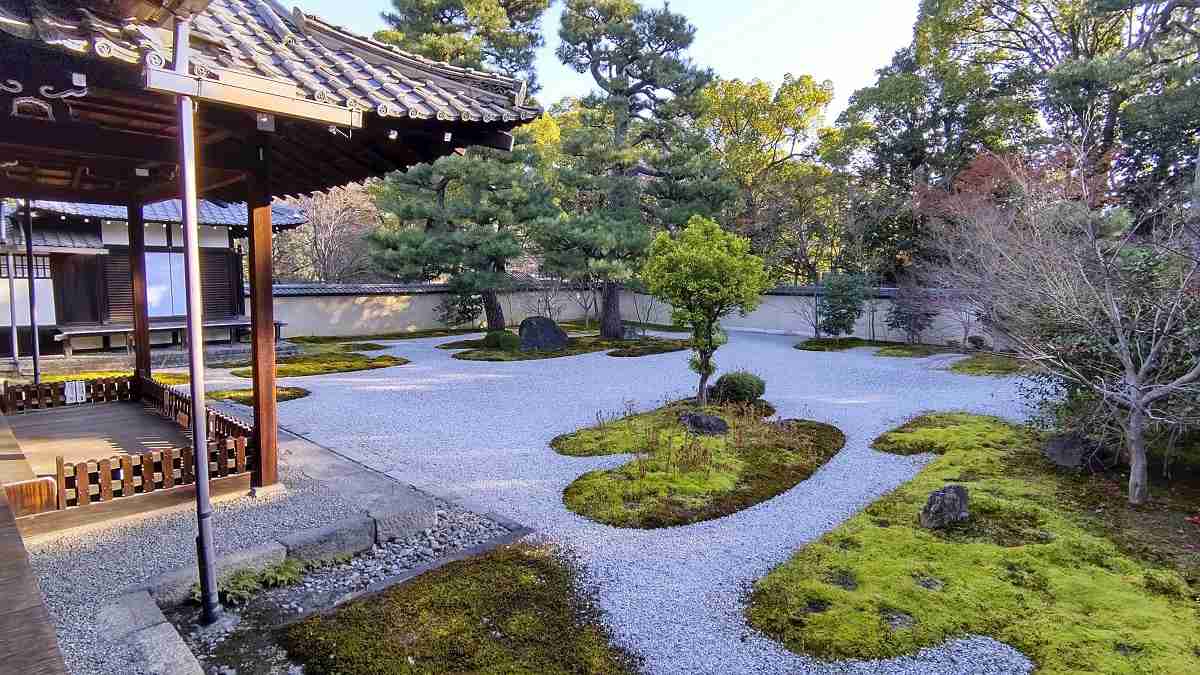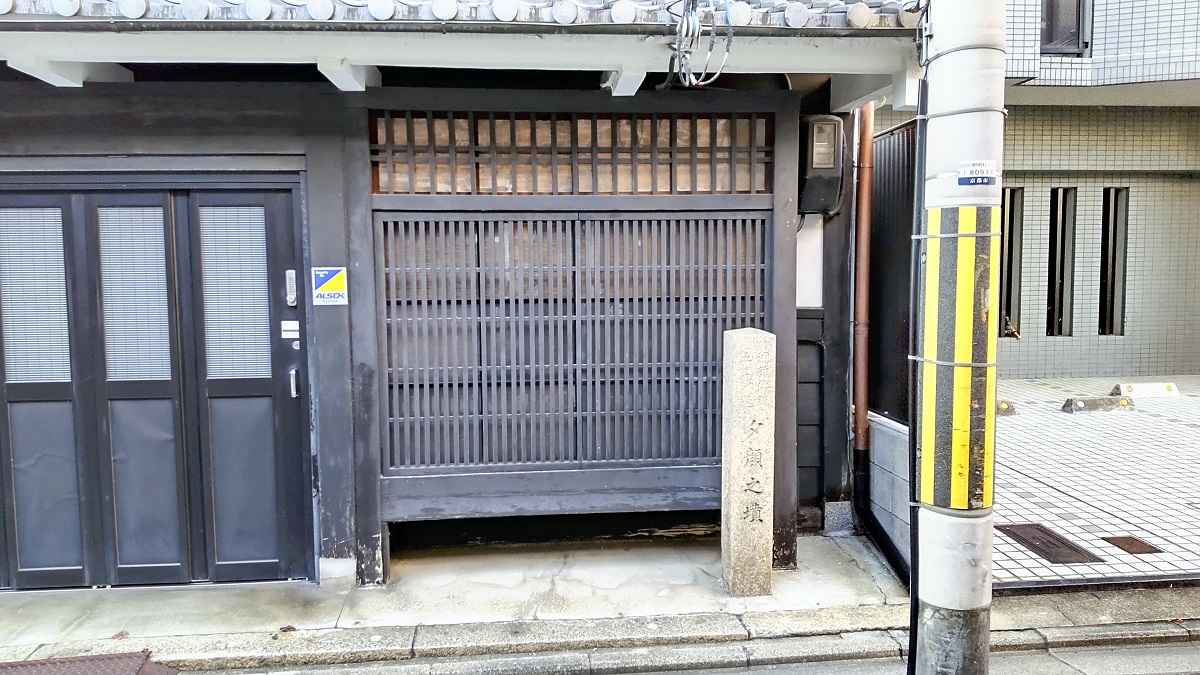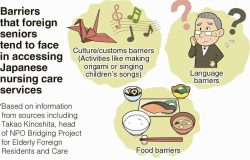
A garden on the site of the former residence of Murasaki Shikibu in Kamigyo Ward, Kyoto
14:00 JST, January 17, 2023
“The Tale of Genji,” written by Murasaki Shikibu in the early 11th century and said to be the world’s first novel, is the best piece of classic literature in Japan.
The story of how Hikaru Genji, a high-ranking aristocrat, has affairs with various women is told like an unfurling picture scroll.
To add a little information regarding the protagonist’s name, “hikaru” means stunning beauty, “gen” was a common family name during that period among Japanese aristocrats and “ji” is his title.
For those who are unfamiliar with the work, I would like to be the one to introduce you to the glamorous but lonely story, which is based on the Buddhist view of impermanence, but can be found anywhere. So, though it may seem less dramatic, I will discuss the geography of where the story takes place.
In the novel, Hikaru Genji, who has gained status and power comparable to the Emperor, builds a mansion called Rokujoin (Rokujo no In) in Kyoto, then known as the ancient capital Heiankyo. The house was built on 250 meters square of land and was four times larger than a typical high-ranking aristocrat’s house in the city. In the novel, the residence is also said to “face Rokujo-oji street.” This description recalls the location of Kawahara no In, the residence of Minamoto no Toru, a top official who lived 100 years before the period in which the work takes place.
It is thought that Hikaru Genji was modeled after several people but was most similar to Minamoto no Toru.
In the story, Hikaru Genji’s Rokujoin residence was built in an area that was not yet developed, even though it was in Heiankyo, which was a well-planned city. It was a stark contrast from the busy neighborhood of the Gojo area, which was north of the Rokujo area and where many commoners lived.
The roads that ran east and west in Heiankyo were numerically named from north to south, starting from Ichijo-oji street in the north and Kujo-oji street in the south. Gojo-oji street was located a little south of central Heiankyo.
The aristocrats mostly lived around the Nijo area, and the young Hikaru Genji is no exception. His residence is called Nijoin.
In the story, Hikaru Genji travels south from his residence, meets a woman named Yugao in the Gojo area and spends the night with her. The next morning, he hears the voices of commoners and others who live in the neighborhood.
One man says, “It is utterly freezing.”
Another says, “Business has been slow this year.”
Readers of the story might have noticed the geographical characteristics of the urban setting described during the scene in which a man and woman of different social classes make love in anonymity.
Even though there is no model for the fictional character of Yugao, her grave can be found a little north of the intersection of Sakaimachi-dori street and Matsubara-dori street. Matsubara-dori was previously called Gojo-oji street during the Heian period (794-late 12th century), so the area is referred to as the Gojo area.
Furthermore, the district where the grave is located is called Yugaocho. It is assumed that a reader of the book who lived in the area many years later built the grave based on their imagination, and the area was eventually named after her.

A monument marking the grave of Yugao stands in front of a private home in Shimogyo Ward, Kyoto.
A similar occurrence took place about 100 years after the period in which “The Tale of Genji” is set. The most powerful person at the time, Emperor Emeritus Shirakawa, established a residence called Rokujo-in — sometimes referred to as Rokujoden or Rokujodairi — about 200 meters west of where Hikaru Genji’s Rokujoin would have been and handled state business from there. Undoubtedly, the retired emperor must have likened himself to the novel’s hero.
These various locations serve as evidence that the fictional story of Hikaru Genji has been powerful enough to change the real world on many levels.
"JN Specialities" POPULAR ARTICLE
-

The Japan News / Weekly Edition (12/12-12/18)
-

Noodle Dining Shunsai / Rich Oyster Ramen to Savor at Odasaga; Experienced 68-year-old Owner Creates Numerous Ramen Varieties
-

The Japan News / Weekly Edition (12/5-12/11)
-

People Keep Loved Ones’ Ashes Close in Special Jewelry, Small Urns as Unique Way to Memorialize Them
-

The Japan News / Weekly Edition (12/19-12/25)
JN ACCESS RANKING
-

Tokyo Economic Security Forum to Hold Inaugural Meeting Amid Tense Global Environment
-

Keidanren Chairman Yoshinobu Tsutsui Visits Kashiwazaki-Kariwa Nuclear Power Plant; Inspects New Emergency Safety System
-

Imports of Rare Earths from China Facing Delays, May Be Caused by Deterioration of Japan-China Relations
-

University of Tokyo Professor Discusses Japanese Economic Security in Interview Ahead of Forum
-

Japan Pulls out of Vietnam Nuclear Project, Complicating Hanoi’s Power Plans

























